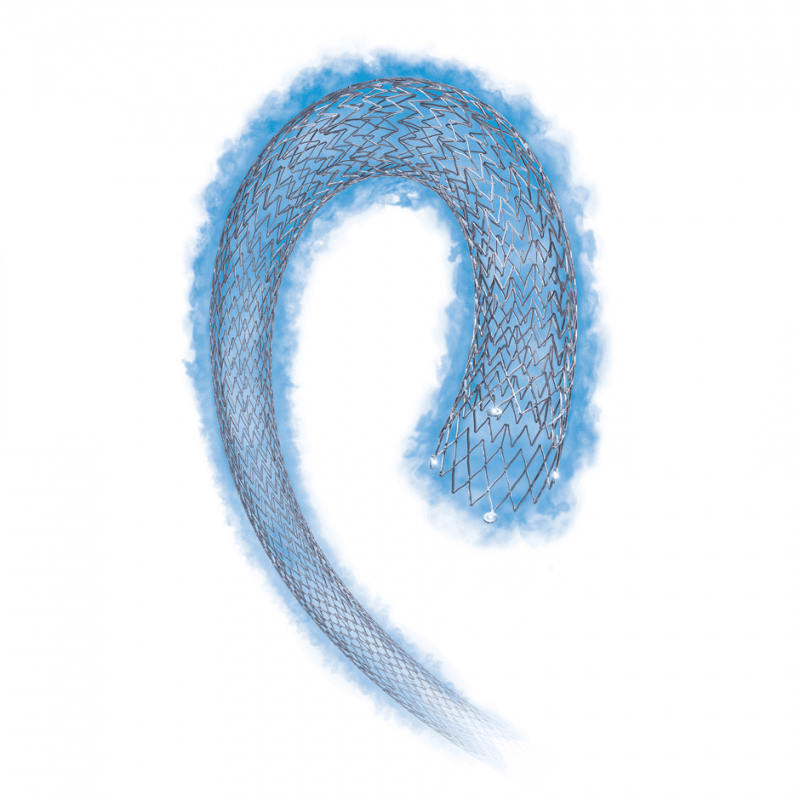September 3, 2020
Boston Scientific announced that the U.S. Centers for Medicare and Medicaid Services (CMS) granted a New Technology Add-on Payment (NTAP) for the Eluvia™ Drug-Eluting Vascular Stent System as part of the 2021 Inpatient Prospective Payment System (IPPS).
Boston Scientific notes the NTAP designation, awarded to new medical devices determined to substantially improve the diagnosis or treatment of Medicare beneficiaries, will be effective on October 1, 2020 and will provide eligible hospitals with incremental reimbursement for the Eluvia stent system for up to three years. The Medicare criteria for an NTAP designation is based on the newness of the device, cost and a substantial clinical improvement.
The Eluvia stent system was developed for the treatment of peripheral artery disease (PAD) – the narrowing of the arteries of the legs due to plaque buildup – which affects approximately 8.5 million people in the United States and more than 200 million people worldwide.[i],[ii] Left untreated, PAD restricts blood flow to the legs and feet and patients often experience pain, swelling and a diminished quality of life. The Eluvia stent re-opens the blocked artery and restores blood flow, while also utilizing a drug-polymer combination to offer a sustained, low-dose release of drug to prevent tissue regrowth within the stented artery.
“The CMS determination is a very positive development for patients with PAD and supports what we have confirmed through our clinical trials – the Eluvia stent offers clinically superior outcomes compared to other peripheral drug-coated technology available to clinicians and their patients,” said Jeff Mirviss, executive vice president and president, Peripheral Interventions, Boston Scientific. “The decision is particularly important given the level of consideration and evaluation related to the role of paclitaxel in the peripheral vasculature, and we believe this designation reflects the unique attributes of the Eluvia stent, which are clearly differentiated and improve the quality of life for the millions of people suffering from symptoms of PAD.”
The NTAP designation will support access to the Eluvia stent for Medicare beneficiaries in the hospital inpatient setting, making it possible for eligible hospitals to receive NTAP payment in addition to the standard Medicare Severity Diagnosis Related Group (MS-DRG) payment.
The FDA approval of the Eluvia stent system in September 2018 was based on findings from the IMPERIAL trial, which exhibited the highest 24-month primary patency reported to date for the treatment of femoropopliteal disease in a U.S. pivotal trial with a drug-coated balloon or drug-eluting stent.[iii] Trial data confirmed a statistically significant lower clinically-driven target lesion revascularization (TLR) rate of 12.7% for patients treated with the Eluvia stent, in contrast to 20.1% observed within the Zilver® PTX® Drug-Eluting Peripheral Stent cohort (p=0.0495), thus reducing the need for repeat procedures at 24 months.[iv]
References
i Centers for Disease Control: https://www.cdc.gov/dhdsp/data_statistics/fact_sheets/fs_pad.htm Accessed July 19, 2019.
ii Shu, J. & Santulli, G. (2018, August). Update on peripheral artery disease: Epidemiology and evidence-based facts. Atherosclerosis Journal, 275(1), 379-381. doi: https://doi.org/10.1016/j.atherosclerosis.2018.05.033.
iii Highest-two year primary patency based on 24-month Kaplan-Meier estimates reported for IMPERIAL, IN.PACT SFA, ILLUMENATE, LEVANT II and Primary Randomization for Zilver PTX RCT.
iv Gray WA, Two-year Outcomes from the IMPERIAL Randomized Head to Head Study of Eluvia DES and Zilver PTX. LINC, January 2020.

